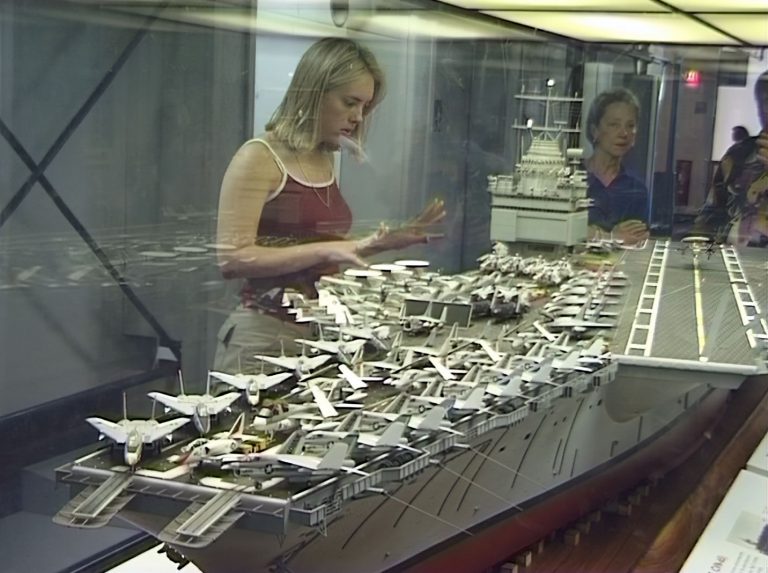Weapons of Mass Pride: India’s Nuclear Embrace
New York Times June 26, 2003
By Elvis Mitchell
 The government is like a mother,” an Indian villager living near a nuclear test site says in the adamant antiwar documentary “War and Peace.” “If a mother feeds poison to its own child, what is the child to do?”
The government is like a mother,” an Indian villager living near a nuclear test site says in the adamant antiwar documentary “War and Peace.” “If a mother feeds poison to its own child, what is the child to do?”
“War and Peace,” which opens today at Anthology Film Archives, is the Indian director Anand Patwardhan’s solemn, stirring perspective on the competitive chauvinism between India and Pakistan, which manifests itself in the nuclear arms race between them. With the
controversy surrounding possible weapons of mass destruction in Iraq, there might not be a better time than the present for this documentary.
The film gets going with a formative incident in both the director’s life and his country’s: powerful black-and-white film of the events surrounding Mohandas Gandhi’s assassination.
“The grief of this moment never really went away,” Mr. Patwardhan says with quiet determination. “The child in me never stopped asking,`Who could’ve done this?’ ”
Nor does he stop wondering what impels a country to stockpile arms. With his potent opening, Mr. Patwardhan sets up both a historical and a philosophical foundation for the film, showing how the aftermath of Gandhi’s death led to wars with China and Pakistan.
“Pacifism became known as the ideal that failed,” he says in soft but assertive tones. As nuclear competition ratchets up between the
Soviet Union and the United States, India becomes involved, too, exploding a nuclear device in 1974. “War and Peace” shows a stunning, worshipful re-creation of this explosion that ends with the horrifying words “The Buddha smiled.” A masterstroke of cunning, it gives the event the weight of folklore. Dr. Raja Ramanna, credited in the movie as the “father” of the nuclear test, shakes his head and says: “I would never have used the Buddha’s name. I have such great respect for him.”
In addition to using religious messages, the leading party in India’s current government, the Hindu nationalist Bharatiya Janata Party, commissioned a pro-arms music video, “We Are Indian,” best
described as “We Are the World” with a half-life.
Indians absorb the grim and effective intention of this message and others that have obviously come before it. One man signs his name in blood to a petition, his agreement taking on the kind of grimly cheap irony that happens only in real life. “Those who clash with us will be ground to dust,” the translation of his words reads. Later in the film schoolchildren read essays of belligerent, hollow fealty to the cause: the mythmaking starts early and runs deep.
Because Mr. Patwardhan is so measured in making his impressive, unrelenting case, “War and Peace” is all the more disturbing. There’s no need for hysteria when he can find villagers as articulate as the man who compared his government to a vicious parent, while cancer rates rise in his homeland. “They told us it was to extract kerosene,” he says of the 1974 test. Dr. Ramanna betrays his own pride with a slight smile, saying secrecy about the test was maintained because nothing was put on paper. The lack of a paper trail, though, didn’t extend to the pride in nuclear munitions that now pervades both India and Pakistan, which, as the film notes, responded to India’s nuclear efforts with its own.
Mr. Patwardhan has located so much information and found so many willing interview subjects that his “War and Peace” has a riveting intelligence all its own and earns its epic title.